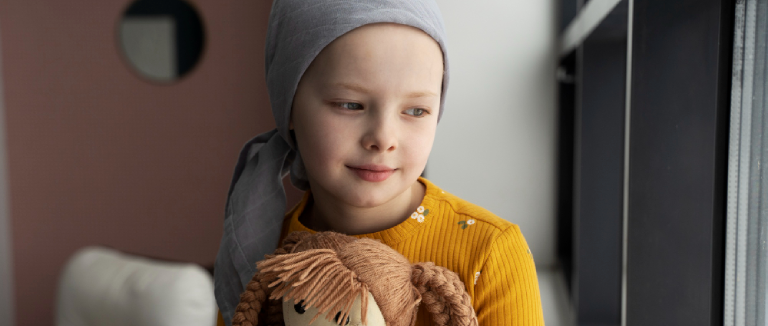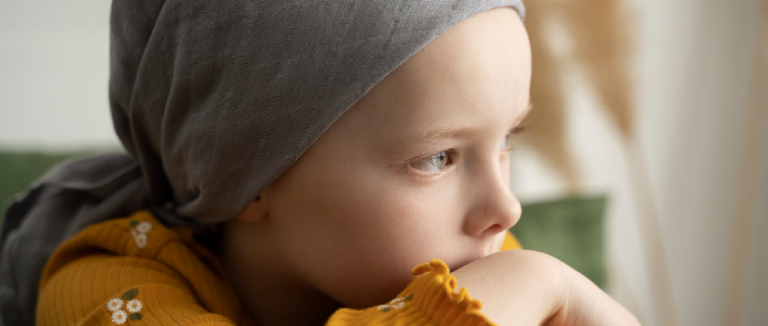
Leukemia is a type of cancer that affects white blood cells. These cells, known as leukocytes, are vital for fighting infections and keeping your immune system strong. When Leukemia develops, the bone marrow starts producing abnormal white blood cells that do not function properly. These cancerous cells crowd out healthy ones, reducing your body’s ability to fight infections.
Although Leukemia can occur in adults, it is the most common cancer diagnosed in children. Thanks to modern treatments and early diagnosis, survival rates continue to improve, offering hope for both patients and families.
What Are The Types Of Leukemia?
There are several different types of leukemia. The most common type in children is Acute Lymphocytic Leukemia (ALL). Other, less common types of childhood leukemia include Acute Myeloid Leukemia (AML), Chronic Myeloid Leukemia (CML), and Juvenile Myelomonocytic Leukemia (JMML).
What Are The Signs And Symptoms Of Leukemia?
Because their white blood cells cannot effectively fight infections, children with leukemia may experience more frequent viral or bacterial infections than other children. Anemia is also common. Other symptoms of leukemia include pale skin, pain in the bones or joints, swollen lymph nodes (glands) in the neck, loss of appetite, weight loss, persistent fever, easy bruising, nosebleeds, and swollen gums.

How Is Leukemia Diagnosed?
The process of diagnosing leukemia in a child typically involves several steps. First, a physician asks about the child's symptoms and reviews their medical history. Next, a physical examination is performed to check for signs such as infection, anemia, unusual bleeding, or swollen lymph nodes.
To assist in diagnosis, the doctor may order various laboratory tests. Depending on the initial findings, additional procedures may be recommended, such as a bone marrow biopsy, a lumbar puncture (spinal tap) to collect spinal fluid, imaging studies, or genetic tests. These steps help confirm the diagnosis and determine the most appropriate treatment plan.
How Is Leukemia Treated?
A pediatric oncologist”an expert in childhood cancer”leads the medical team responsible for treating children with leukemia. They collaborate closely with other professionals, including nurses, social workers, psychologists, and surgeons, to provide comprehensive care.
Chemotherapy is the primary treatment for childhood leukemia, with medication types and dosages tailored to the child's age and specific leukemia type. Additional treatment options, such as radiation therapy, targeted drug therapies, and bone marrow transplantation, may also be considered based on individual needs.

Some Other Facts About Leukemia:
- Your child's sex can affect your prognosis and how long your treatment will take.
- Bone marrow transplantation is not always needed when treating leukemia. This depends on the type of leukemia and the response to treatment.
- You should take fever very seriously during leukemia treatment. In most cases, the use of antibiotics should be started immediately.
- You may need to interrupt your child's vaccinations for a while during the treatment for leukemia.
- There may be many long-term side effects associated with leukemia treatment. Depending on the treatment your child receives, post-treatment follow-up is required.
The Liv Hospital Editorial Board has contributed to this content.
The information provided on this page is for informational purposes only and is not a substitute for professional medical advice, diagnosis, or treatment. Please consult your doctor for personalized care. This page does not include details about medicinal healthcare services at Liv Hospital.
For more information about our academic and training initiatives, visit Liv Hospital Academy